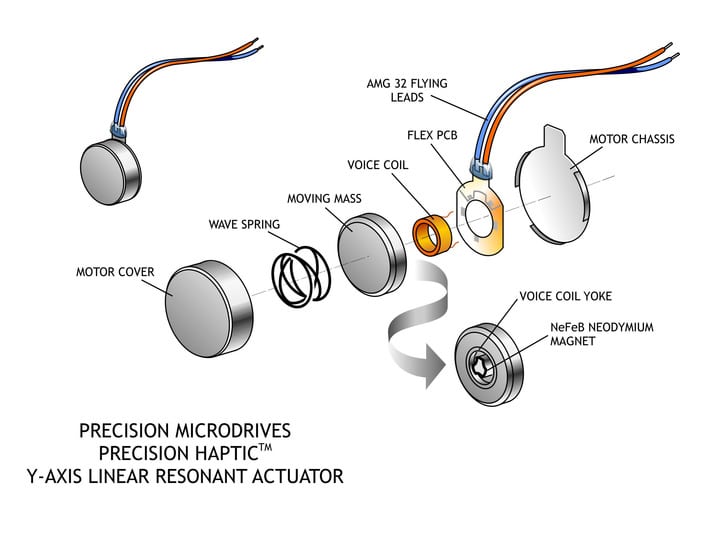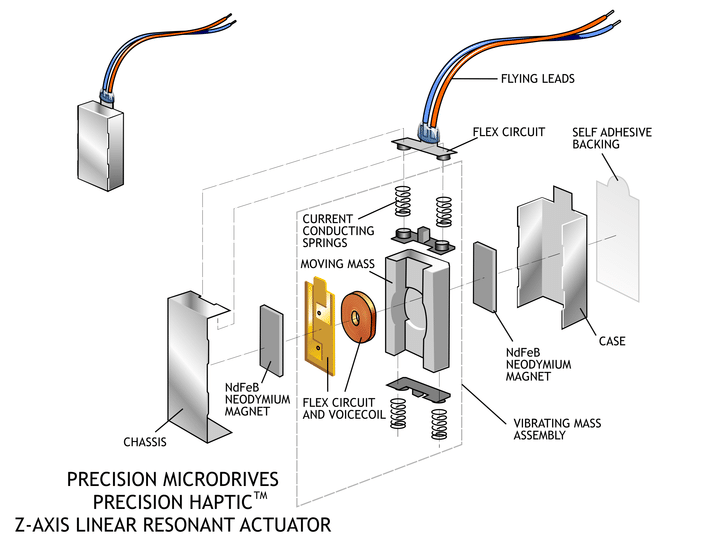LRA
LRA stands for linear resonant actuator and rely on a small internal mass attached to a spring, which vibrates in a reciprocating linear motion with an applied AC signal.
In contrast to ERMs, LRAs do not spin. They linearly move a mass (up and down) attached to a spring using a magnetic voice coil. LRAs require a smooth sine wave voltage signal (aka an AC signal) driven at specific resonant frequencies — usually 150-200Hz — which controls how often the mass moves and, therefore, the vibration oscillation. They are increasingly common in smartphones, watches, and trackpads to mimic the feeling of a click.
For example, newer Apple MacBooks and iPhones feature the Apple Taptic Engine, which uses LRA technology. While LRAs are more responsive than ERMs (~15-25ms startup times), their vibration strength is more minimal and the wiring circuitry more complicated. Moreover, their vibration frequency is strongest at a single frequency (the resonant frequency).
LRA types
Most LRA drives are divided into 2 categories:
- Y-Axis LRA Linear Vibrator
- Z-Axis LRA Linear Vibrator
| Y-Axis LRA | Z-Axis LRA |
|---|---|
 |  |
Applying LRAs
There is no strict rules, how to apply different actuators, just a recommendation, based on personal experience.
| ERM type | Feedback Force | Vest | Glove | Facial Interface | Other wearable |
|---|---|---|---|---|---|
| Coin LRA | Weakest | ❌ | ✅ | ✅ | ❌ |
Credits
- Makeability Lab
- Precision Microdrives: 1, 2